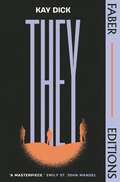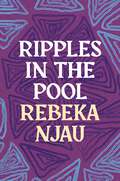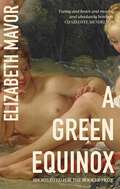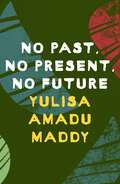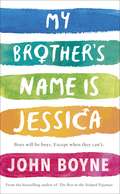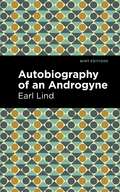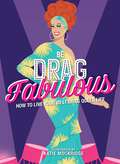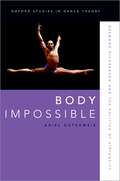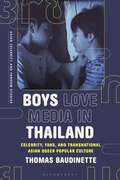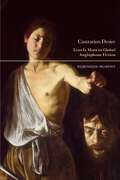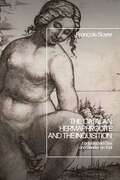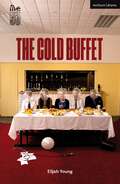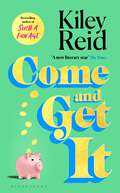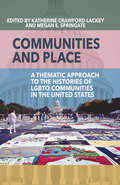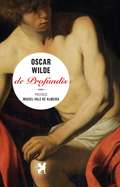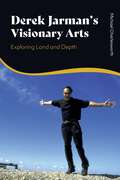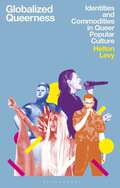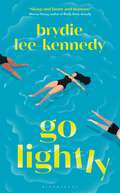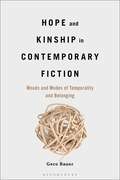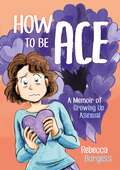- Table View
- List View
They: The Lost Dystopian 'Masterpiece' (Emily St. John Mandel)
by Kay DickThe radical dystopian classic, lost for forty years: in a nightmarish Britain, THEY are coming closer.'A creepily prescient tale ... Insidiously horrifying!' Margaret Atwood'A masterpiece of creeping dread.' Emily St. John MandelThis is Britain: but not as we know it.THEY begin with a dead dog, shadowy footsteps, confiscated books. Soon the National Gallery is purged; eerie towers survey the coast; mobs stalk the countryside destroying artworks - and those who resist.THEY capture dissidents - writers, painters, musicians, even the unmarried and childless - in military sweeps, 'curing' these subversives of individual identity.Survivors gather together as cultural refugees, preserving their crafts, creating, loving and remembering. But THEY make it easier to forget ...Lost for half a century, newly introduced by Carmen Maria Machado, Kay Dick's They (1977) is a rediscovered dystopian masterpiece of art under attack: a cry from the soul against censorship, a radical celebration of non-conformity - and a warning.'Delicious and sexy and downright chilling ... Read it!' Rumaan Alam'Crystalline ... The signature of an enchantress.' Edna O'Brien'I'm pretty wild about this paranoid, terrifying 1977 masterpiece.' Lauren Groff'Deft, dread filled, hypnotic and hopeful. Completely got under my skin.' Kiran Millwood Hargrave'Lush, hypnotic, compulsive ... A reminder of where groupthink leads.' Eimear McBride'A masterwork of English pastoral horror: eerie and bewitching.' Claire-Louise Bennett
Ripples in the Pool
by Rebeka NjauIn Ripples in the Pool, pioneering author Rebeka Njau depicts a love affair between two women and the futile fight for female independence.A rich, modern woman, Selina has happily embraced the independence of the city and looks forward to starting her new life with her husband, Gikere. Yet when his mother implores them to return to their village, Selina's own happiness comes under threat.Unexpectedly, Selina finds comfort in the affections of Gikere's younger sister, Gaciru. Distancing herself from a marriage that has become increasingly violent, Selina falls deeper and deeper into a maddening love affair with ruinous results...Groundbreaking in its time, Ripples in the Pool still has resonance and impact today in its portrayal of forbidden love in an intolerant society.
A Green Equinox (Virago Modern Classics #820)
by Elizabeth Mavor'Funny and brave and moving and absolutely bonkers. I love this novel' CHARLOTTE MENDELSON'Elizabeth Mavor relishes spirited, unorthodox women, free with their tongues and ready to snap their fingers at convention' LONDON REVIEW OF BOOKSHero Kinoull is an antiquarian bookseller whose sedate life in the picturesque English town of Beaudesert is turned upside down between the spring and autumn equinoxes of a single year. First her quiet but forbidden liaison with Hugh Shafto, the curator of the country's finest collection of Rococo art, comes to an abrupt halt when she develops an adoration for his straight-talking, do-gooding wife Belle. But this relationship leads to other, even more unexpected feelings for Belle's widowed mother-in-law, the majestic Kate Shafto, who spends her days tending her garden and sailing her handmade boats in the waters of the miniature archipelago she's constructed in a disused gravel pit.
No Past, No Present, No Future
by Yulisa Amadu MaddyIn his bold and pioneering novel, No Past, No Present, No Future, Yulisa Amadu Maddy explores the dynamics between three young boys as their lives slip quickly into chaos and tragedy. At a missionary school in colonial West Africa, three students from very different backgrounds forge a friendship in an effort to forget the difficulties they face at home. But when one of the boys betrays the other, a series of disastrous events spiral into out of control. After finally leaving school, their paths cross once again in Europe but prejudice and diverging loyalties put the brotherhood they once had into question. How can they ever dream of a future together when the ghosts of the past are determined to haunt their present?
My Brother's Name is Jessica
by John BoyneSam Waver's life has always been pretty quiet. A bit of a loner, he struggles to make friends, and his busy parents often make him feel invisible. Luckily for Sam, his older brother, Jason, has always been there for him. Sam idolises Jason, who seems to have life sorted - he's kind, popular, amazing at football, and girls are falling over themselves to date him. But then one evening Jason calls his family together to tell them that he's been struggling with a secret for a long time. A secret which quickly threatens to tear them all apart. His parents don't want to know and Sam simply doesn't understand.Because what do you do when your brother says he's not your brother at all? That he's actually . . . your sister?
Autobiography of an Androgyne
by Earl LindAutobiography of an Androgyne (1918) is an autobiography by Earl Lind. Accompanied by an introduction by Dr. Alfred W. Herzog, Lind’s autobiography―intended for a clinical audience―has been recognized as a pioneering work in the history of transgender literature. Throughout his life, Lind was forced to justify and defend his existence from puritanical authorities who refused to even recognize the reality of his identity as an androgyne. In the first of his trilogy of autobiographical works, he not only demands recognition, but exposes the denial of his existence as nothing but hatred and fear. “Androgynes have of course existed in all ages of history and among all races. In Greek and Latin authors there are many references to them, but these references are not always understood except by the few scholars who are themselves androgynes or at least passive sexual inverts. […] [T]hese men-women, because misunderstood, have been held in great abomination both in the middle ages and in modern times, but the prejudice against them was not so extreme in antiquity, and a cultured citizen having this nature did not then lose caste on this account.” Situating his own identity within this history of oppression, Lind makes the case for recognizing the presence of androgynes in all human societies. Ever since he was a child, Lind identified as feminine and was keenly aware of his homosexual desires, gaining a reputation among the local boys and soon turning to girls for friendship and understanding. In a world that saw androgynes as both corrupt and willfully different, Lind sought to increase understanding and to explain through scientific, historical, and personal evidence why his identity was congenital, and therefore natural. With a beautifully designed cover and professionally typeset manuscript, this edition of Earl Lind’s Autobiography of an Androgyne is a classic work of transgender literature reimagined for modern readers.
Be Drag Fabulous: How to Live Your Best Drag Queen Life
by Katie MockridgeBringing together life advice and gorgeous illustrations inspired by some of the best drag queens from all over the world, this book will have you sashaying your way to success.Whenever you need life advice, just think: WWADQD – What Would A Drag Queen Do? Containing 75 essential lessons, Be Drag Fabulous will show you how to become the most spectacular version of yourself.Containing gorgeous illustrations by Katie Mockridge, this little book of drag wit and wisdom has you covered on all aspects of life, from fashion and self-care, beauty, friendships and work and brings together the best drag queens from around the world.Make your world you very own catwalk and learn how to channel your charisma, uniqueness, nerve and talent. Condragulations, this is the first step in becoming drag fabulous. The perfect gift for fans of RuPaul’s Drag Race.
Beautiful: The Story of Julian Eltinge, America's Greatest Female Impersonator
by Andrew L. ErdmanFrom the late 19th to the early 21st centuries, female impersonation was a hugely popular performance genre. Long before today's popular television shows, men in colleges, business, and even the military formed drag clubs and put on musicals and variety shows of all kinds with little fear of negative judgment. But no female impersonator was as famous, successful, or highly-regarded as Julian Eltinge (1881-1941). Eltinge, born William Dalton just outside Boston, started playing female characters and imitating women with his mother's encouragement as a child while his father shuttled his family around the Americas in search of a mining fortune that never materialized. The future drag star returned to Boston in his late teens where he quickly rose through the ranks of semi-amateur all-male musicals, then transitioned to vaudeville, and eventually starred in hugely successful musical comedies such as The Fascinating Widow (1910). For decades, the Julian Eltinge Theatre on West 42nd Street bore testament to his stature. But Eltinge longed to play serious roles which did not require him to impersonate women; it was a lifelong struggle. He constructed a hypermasculine offstage persona-- a cigar-loving former Harvard athlete who beat up anyone who questioned his manliness--most of which wasn't true. But Eltinge's efforts were essential in a culture increasingly focused on separating ?real men? from ?inverts? and ?perverts,? demanding men define themselves in new ways during a time of economic and cultural upheaval. During his heyday, Eltinge published a beauty and advice magazine for women, launched lifestyle-brand makeup and skincare products, and became a paid spokesperson for corsets and women's shoes, all without a hint of irony. Julian Eltinge's success with mainstream audiences, ever avoiding suspicions and scandal, says much about the emergent middle-class white heteronormativity of the era and what we have come to think of as the social construction of gender. Beautiful pays tribute to Eltinge and gives rich insight into his unique contributions to the transformation of cultural ideas about masculinity and femininity.
Body Impossible: Desmond Richardson and the Politics of Virtuosity (Oxford Studies in Dance Theory)
by Ariel OsterweisBody Impossible theorizes the concept of virtuosity in contemporary dance and performance through a study of the career of dancer Desmond Richardson. A virtuoso for the ages, Richardson is renowned for delivering commanding performances over decades in contexts ranging from the stages of the Alvin Ailey American Dance Theater and Ballett Frankfurt to featured appearances with Michael Jackson and Prince, along with his work as co-founder of Complexions Contemporary Ballet, inaugurating a virtuosic queer black aesthetic with choreographer Dwight Rhoden. Focusing on Richardson's creative insistence on improvisatory fun and excellence throughout the decades approaching the millennium (shaped by Reaganism, the Culture Wars, the AIDS epidemic, the New Jim Crow, and MTV), this book brings dance into conversation with paradigms of blackness, queerness, masculinity, and class in order to generate a socioculturally attentive understanding of virtuosity. Virtuosity obscures the border between popular and concert performance, and Richardson's versatility epitomizes the demands on the contemporary virtuosic dance artist. Author Ariel Osterweis suggests that discourses of virtuosity are linked to connotations of excess, and that an examination of the formal and socio-cultural aspects of virtuosic performance reveals under-recognized heterogeneity in which we detect ?vernacular? influences on ?high art.? In doing so, Body Impossible accounts for the constitutive relationship between disciplined perceptions of virtuosity's excess and the disciplining of the racialized body in national and transnational contexts.
Boys Love Media in Thailand: Celebrity, Fans, and Transnational Asian Queer Popular Culture (Asian Celebrity and Fandom Studies)
by Thomas BaudinetteOver the past several years, the Thai popular culture landscape has radically transformed due to the emergence of “Boys Love” (BL) soap operas which celebrate the love between handsome young men. Boys Love Media in Thailand: Celebrity, Fans, and Transnational Asian Queer Popular Culture is the first book length study of this increasingly significant transnational pop culture phenomenon. Drawing upon six years of ethnographic research, the book reveals BL's impacts on depictions of same-sex desire in Thai media culture and the resultant mainstreaming of queer romance through new forms of celebrity and participatory fandom. The author explores how the rise of BL has transformed contemporary Thai consumer culture, leading to heterosexual female fans of male celebrities who perform homoeroticism becoming the main audience to whom Thai pop culture is geared. Through the case study of BL, this book thus also investigates how Thai media is responding to broader regional trends across Asia where the economic potentials of female and queer fans are becoming increasingly important. Baudinette ultimately argues that the center of queer cultural production in Asia has shifted from Japan to Thailand, investigating both the growing international fandom of Thailand's BL series as well as the influence of international investment into the development of these media. The book particularly focuses on specific case studies of the fandom for Thai BL celebrity couples in Thailand, China, the Philippines, and Japan to explore how BL series have transformed each of these national contexts' queer consumer cultures.
Castration Desire: Less Is More in Global Anglophone Fiction
by Prof. or Dr. Robinson MurphyTheorizes an alternative form of masculinity in global literature that is less egocentric and more sustainable, both in terms of gendered and environmental power dynamics.Contemporary novelists and filmmakers like Kazuo Ishiguro (Japanese-British), Emma Donoghue (Irish-Canadian), Michael Ondaatje (Sri Lankan-Canadian), Bong Joon-ho (South Korean) and J.M. Coetzee (South African-Australian) are emblematic of a transnational phenomenon that Robinson Murphy calls “castration desire.” That is, these artists present privileged characters who nonetheless pursue their own diminishment. In promulgating through their characters a less egocentric mode of thinking and acting, these artists offer a blueprint for engendering a more other-oriented global relationality. Murphy proposes that, in addition to being an ethical prerogative, castration desire's “less is more” model of relationality would make life livable where veritable suicide is our species' otherwise potential fate. “Castration desire” thus offers an antidote to rapacious extractivism, with the ambition of instilling a sustainable model for thinking and acting on an imminently eco-apocalyptic earth.In providing a fresh optic through which to read a diversity of text-types, Castration Desire helps define where literary criticism is now and where it is headed. Castration Desire additionally extends and develops a zeitgeist currently unfolding in critical theory. It brings Leo Bersani's concept “psychic utopia” together with Judith Butler's “radical egalitarianism,” but transports their shared critique of phallic individualization into the environmental humanities. In doing so, this book builds a new framework for how gender studies intersects with environmental studies.
The ‘Catalan Hermaphrodite’ and the Inquisition: Early Modern Sex and Gender on Trial
by Professor François SoyerThis book examines the life of Maria Duran, who was born with female genitalia, but was accused of being a man and subsequently put on trial for sorcery by the Portuguese Inquisition during the 18th century. François Soyer uses Maria's story to open a window onto the world of the experience of 'transing' gender, as well as the gendered attitudes and responses to the transgression of gendered norms that were adopted by churchmen, medical practitioners and ordinary lay men and women. Drawing on the surviving (and staggeringly 736-page long) sorcery trial dossier, Soyer analyses the secretive life of an individual who actively and deliberately 'transed' gender. The dossier analysis enables insights into aspects of life so rarely recorded in early modern documents: the transgression of gender norms, transgressive sexuality and sexual violence in female religious institutions, in addition to the fears and debates about the power that the Devil could wield over the human body. The 'Catalan Hermaphrodite' and the Inquisition also reveals how the Inquisition gathered a number of doctors, surgeons and midwives to conduct careful examinations of Maria's body in general and genitals in particular. Their reports and the discussions of the inquisitors are discussed by Soyer and offer further fascinating evidence of attitudes towards sex and gender in early modern Europe.
The Cold Buffet (Modern Plays)
by Elijah YoungWe're family. We don't have to like each other.Things are never easy for Ellis when the family gets together. A dad who doesn't get him, a cousin who can do no wrong, a (not-so-passive) aggressive grandma, his dad's latest intolerable girlfriend and a grandpa in an urn are just some of the things Ellis has to contend with. When it begins to become tradition at these occasions for true feelings to be unearthed, is it finally time for Ellis to cut ties?Set in the back room of a social club, away from the main action, the play journeys us through a wake, a wedding and a christening, and lifts the lid on the tensions behind every family ritual. Many things change over the years but something that will always remain is the same cold buffet. Elijah Young's epic comedy The Cold Buffet follows the McCarthy family over five years of life, death and love. It's a delicious North East family saga laced with dry humour and a good dose of interpersonal tension.This edition was published to coincide with the world premiere at Newcastle's Live Theatre, in October 2023.
Come and Get It: One of 2024's hottest reads – chosen for Fearne Cotton's Happy Place Book Club
by Kiley ReidTHE UNMISSABLE NEW NOVEL FROM THE AUTHOR OF BESTSELLING PHENOMENON SUCH A FUN AGE* THE INSTANT NEW YORK TIMES BESTSELLER ** FEARNE COTTON'S HAPPY PLACE BOOK CLUB PICK FOR FEBRUARY *'I couldn't put it down, and I didn't want to either' EMILY HENRY'The drama is just too juicy – how could anyone resist a binge?' GUARDIAN'Razor-sharp … Packs a huge emotional punch' DAILY MAILEverything comes at a price. But not everything can be paid for…Millie wants to graduate, get a job and buy a house. She's slowly saving up from her job on campus, but when a visiting professor offers her an unusual opportunity to make some extra money, she jumps at the chance. Agatha is a writer, recovering from a break-up while researching attitudes towards weddings and money for her new book. She strikes gold when interviewing the girls in Millie's dorm, but her plans take a turn when she realises that the best material is unfolding behind closed doors. As the two women form an unlikely relationship, they soon become embroiled in a world of roommate theatrics, vengeful pranks and illicit intrigue – and are forced to question just how much of themselves they are willing to trade to get what they want.Sharp, intimate and provocative, Come and Get It takes a lens to our money-obsessed society in a tension-filled story about desire, consumption and bad behaviour.'Smart, funny and perceptive' i'A perfect read' STYLIST 'Wonderfully immersive, propulsive and beautifully paced' PAUL HARDING 'Quiet and intense … A joy to read' JESSICA GEORGE'Witty and nuanced' RED'[An] incisive novel everyone will be talking about' TOWN AND COUNTRY
Communities and Place: A Thematic Approach to the Histories of LGBTQ Communities in the United States
by Katherine Crawford-Lackey Megan E. SpringateLesbian, gay, bisexual, transgender, and queer (LGBTQ) people have established gathering spaces to find acceptance, form social networks, and unify to resist oppression. Framing the emergence of queer enclaves in reference to place, this volume explores the physical and symbolic spaces of LGBTQ Americans. Authors provide an overview of the concept of “place” and its role in informing identity formation and community building. The book also includes interactive project prompts, providing opportunities to practically apply topics and theories discussed in the chapters.
Communities and Place: A Thematic Approach to the Histories of LGBTQ Communities in the United States
by Katherine Crawford-Lackey Megan E. SpringateLesbian, gay, bisexual, transgender, and queer (LGBTQ) people have established gathering spaces to find acceptance, form social networks, and unify to resist oppression. Framing the emergence of queer enclaves in reference to place, this volume explores the physical and symbolic spaces of LGBTQ Americans. Authors provide an overview of the concept of “place” and its role in informing identity formation and community building. The book also includes interactive project prompts, providing opportunities to practically apply topics and theories discussed in the chapters.
De Profundis
by Rita Correia Isabel Robalinho Miguel Vale de Almeida Oscar WildeNo Verão de 1891, Wilde é apresentado ao jovem Lord Alfred Douglas, familiarmente conhecido como Bosie, estudante de Oxford com aspirações literárias, filho do Marquês de Queensberry. Inicia-se então a tempestuosa amizade que culminará no julgamento e condenação de Oscar Wilde a dois anos de trabalhos forçados, em 1895. A longa carta dirigida a Lord Alfred Douglas foi escrita durante os últimos meses que Wilde passou na prisão de Reading. Esta carta não foi enviada a Bosie da prisão, mas confiada a Robert Ross, amigo de Wilde, várias vezes mencionado ao longo do texto, que dela mandou fazer duas cópias, de acordo com a vontade de Oscar Wilde. Uma das cópias teria como destinatário Lord Alfred Douglas, que sempre negou tê-la recebido, a segunda foi deixada em testamento ao filho de Wilde, Vyvyan Holland.
Derek Jarman’s Visionary Arts: Exploring Land and Depth
by Michael CharlesworthDerek Jarman's place in the history of film is assured by virtue of his vibrant, defiant films that experiment with the very process of film-making and create new forms. His paintings, their excitements and their profundity, are less well known. Michael Charlesworth sheds light on the varied ramifications of Jarman's artistic practice from his years at Prospect Cottage, Dungeness, and provides the first book-length study of his interest in depth psychology. He draws on Jarman's paintings, especially his landscapes from the 1960s and 70s, his multiple series such as 'black' and 'broken glass', GBH, Queer and Evil Queen, and his last Ecstatic Landscapes (1991-3). He also showcases Jarman's excellence as a writer with respect to his memoir, Kicking the Pricks. In a novel approach to Jarman's cinema, selecting films such as Journey to Avebury (1973), Caravaggio (1986), The Garden (1990) and Blue (1993), Charlesworth emphasizes themes and artistry rather than narrative. Exploring the ways in which Jungian and post-Jungian psychology were absorbed into Jarman's varied works, Derek Jarman's Visionary Arts provides a fresh perspective on his painting, film and writing. It celebrates him as one of the major British artists of the late 20th century, engaging with current debates about queer sexualities, environmentalism and climate catastrophe.
Experimental Film and Queer Materiality
by Juan A. Su?rezOften described as an art of abstraction and subjective introspection, experimental film is also invested in exploring daily objects and materials and in channeling, in the process, a peculiar perception of the modern everyday that this book calls queer materiality. Queer materiality designates the queer latency of modern material culture, which often inspired queer artists and filmmakers to envision wayward bodies and behaviors, and refers to the way in which sexual and social dissidence was embedded in the objects, technologies, substances, and spaces that make up the hardware of experience. This book studies a rich archive of queer material engagements in work by well-known filmmakers such as Andy Warhol, Barbara Hammer, Carolee Schneemann, and Jack Smith as well as under-recognized figures such as Tom Chomont, Jim Hubbard, Ashley Hans Scheirl, and Teo Hern?ndez. Combining history, formal analysis, and theoretical reflection, author Juan A. Su?rez shows how plastics, glitter, mechanical ensembles, urban ruins, garbage, amphetamine, film grain, and noise have been mobilized in the articulation of queerness for the screen. Experimental Film and Queer Materiality is an inquiry into the liveliness of matter and into the interface between sexuality and the material world.
Feeling Singular: Queer Masculinities in the Early United States
by Ben BascomMuch of U.S. cultural production since the twentieth century has celebrated the figure of the singular individual, from the lonesome Huckleberry Finn to the cinematic loners John Wayne and Clint Eastwood, but that tradition casts a backward shadow that prohibits seeing how the singular in America was previously marked as unwanted, outcast, excessive, or weird. Feeling Singular: Queer Masculinities in the Early United States examines the paradoxical nature of masculine self-promotion and individuality in the early United States. Through a collection of singular life narratives, author Ben Bascom draws on a queer studies approach that uncovers how fraught private desires shaped a public masculinity increasingly at odds with the disinterested norms of republican public culture. In telling the stories of excessive American masculinities, Feeling Singular presents the Early Republic of the United States as a queer and messy world of social outcasts and eccentric personalities all vying--and in spectacular ways failing--for public attention. These figures include John Fitch (1743-1798), a struggling working-class mechanic; Jeffrey Brace (1742-1827), a formerly enslaved Black Revolutionary War veteran; Timothy Dexter (1747-1806), a self-declared "Lord" who secured a fortune through a risky venture in bedpans and whalebone corsets; Jonathan Plummer (1761-1819), an itinerant peddler and preacher; and William "Amos" Wilson (1762-1821), a reclusive stonecutter who became popularly known as "the Pennsylvania Hermit." Despite leaving behind copious manuscripts and printed autobiographies, they dwindled instead into cultural insignificance, failing to achieve what scholars have called the hallmarks of "republican masculinity." Through closely reading a range of texts--from manuscripts to hastily printed books, and from phonetically spelled pamphlets to sexually explicit broadsides--Bascom uses the language of queer studies to understand what made someone singular in the early United States and how that singularity points at the ruptures in social codes that get normalized through historical analysis. Departing from the likes of Benjamin Franklin, whom tradition positions as a paragon of self-production, this book offers instead typologies of the failed inventor, the tragic outsider, the flamboyant pretender, the farcical exhorter, and the disaffected exile.
Gay Conversion Practices in Memoir, Film and Fiction: Stories of Repentance and Defiance (Library of Gender and Popular Culture)
For over half a century, organizations and individuals promoting ex-gay, conversion and/ or reparative therapy have pushed the tenet that a person may be able to, and should, alter their sexual orientation. Their so-called treatments or therapies have taken various forms over the decades, ranging from medical (including psychiatric or psychological) rehabilitation approaches, to counselling, and religious healing. Gay Conversion Practices in Memoir, Film and Fiction provides an in-depth exploration of the disturbing phenomenon of gay conversion 'therapy' and its fictional and autobiographical representations across a broad range of films and books such as But I'm a Cheerleader! (1999), This is What Love in Action Looks Like (2011) and Boy Erased (2018). In doing so, the volume emphasizes the powerful role the arts and media play in communicating stories around conversion practices. Approaching the timely and urgent subject from an interdisciplinary perspective, contributors utilize film theory, queer theory, literary theory, mental health and social movement theory to discuss the medicalization and pathologizing of queer people, the power of institutions ranging from church, psychiatry and family (sometimes in alliance), and the real and fictional voices of survivors.
Globalized Queerness: Identities and Commodities in Queer Popular Culture (Library of Gender and Popular Culture)
by Helton LevyHas a global queer popular culture emerged at the expense of local queer artists? In this book, Helton Levy argues that global queer culture is indebted to specific, local references that artists carry from their early experiences in life, which then become homogenized by contemporary media markets. The assumption that queer publics live and consume only through a global set of references, including gay parades and rainbow flags, for example, erases many personal complexities.Levy revisits media characters that have caught the attention of the broader public – such as Calamity Jane (1953), the Daffyd Thomas character from the BBC comedy Little Britain (2003-2007), Brazilian drag queen Pabblo Vittar, French singer Christine and the Queens, and the Italian-Egyptian rapper Mahmood – and argues that they have gradually blended in the public's perception. This has often obscured the individual struggles faced by these characters, such as immigration, homophobia, poverty and societal exclusion. Levy also questions what happens when global media flows take queer culture to regions wherein the notion of LGBTQ+ rights are not entirely acceptable. Utilizing insights from media reports published across the world's ten biggest media markets, Levy argues that there are a series of conditions which artists and cultural actors negotiate once they achieve any kind of success in mainstream media, while local queer references remain unseen in the wider media world. For that reason, he argues for stronger incentives for communities to accept and acknowledge the work of queer people before and after commoditization.
Go Lightly: The funny, sharp and heartfelt bisexual love story
by Brydie Lee-Kennedy'Sharp and funny and humane ... Brydie skewers everyone equally, but always with empathy, warmth and wit.' Monica Heisey, author of Really Good, Actually'A novel that really nails the chaos, panic and joy of being young' Daisy Buchanan, author of Insatiable'Captures twentysomething chaos ... Very funny' THE TIMESA funny and tender twenty-first century story of family, friendship, love – and how getting it wrong is sometimes the only way to get it right.WHO IS ADA?With Sadie she's an Aussie girl in London, a performer, a ball of creativity and a lover of food.With Stuart she's funny and quirky, capable of finding romance in a dinner of crisps on a cold harbour and long train rides.With her family she's the joker, the peacekeeper, the entertainer.But she doesn't have to choose which version of herself to be… right?Ada's answer to most questions is: yes. Every night is an opportunity to be thrilled and every morning a chance to recount it to her friends, so when she falls for Sadie and Stuart at the same time, she sees no reason not to pursue them both.But as the realities of modern life begin to catch up with her, and everyone wants Ada to define herself in relation to them, she feels the weight of the questions: which version of yourself is most true? And do other people enhance your best self, or distort it?Go Lightly is a tribute to party girls who'd rather enjoy the present than fear the future or regret the past, and a love letter to the community you find when you're far from home.'Funny, perceptive and effortlessly engaging … I loved this novel' Lily Lindon, author of Double Booked
Hope and Kinship in Contemporary Fiction: Moods and Modes of Temporality and Belonging
by Dr. Gero BauerExplores the emphasis that contemporary novels, films and television series place on the present, arguing that hope emerges from the potentiality of the here and now, rather than the future, and as intimately entangled with negotiations of structures of belonging.Taking its cue from an understanding of hope as connoting an organizing temporality, one which is often presumed to be projecting into a future, Hope and Kinship in Contemporary Fiction challenges this understanding, arguing that hope emerges in practices of relationality in the present, disentangling hope from a necessary correlation with futurity. Through close readings of contemporary works, including The Road, The Walking Dead, Cloud Atlas, Sense8, The People in the Trees and A Little Life, Gero Bauer investigates how these texts explore structures of kinship as creative and affective practices of belonging and care that claim spaces beyond the heterosexual, reproductive nuclear family. In this context, fictional figurations of the child – often considered the bearer of the future – are of particular interest. Through these interventions into definitions of and reflections on fictional manifestations of hope and kinship, Bauer's analyses intersect with queer theory, new materialism and postcritical approaches to literature and cultural studies, moving towards counterintuitively hopeful readings of the present moment.
How to Be Ace: A Memoir of Growing Up Asexual
by Rebecca BurgessPRISM AWARDS FINALIST 2021GREAT GRAPHIC NOVELS FOR TEENS - YOUNG ADULT LIBRARY SERVICES ASSOCIATION (YALSA) 2022"When I was in school, everyone got to a certain age where they became interested in talking about only one thing: boys, girls and sex. Me though? I was only interested in comics."Growing up, Rebecca assumes sex is just a scary new thing they will 'grow into' as they get older, but when they leave school, start working and do grow up, they start to wonder why they don't want to have sex with other people.In this brave, hilarious and empowering graphic memoir, we follow Rebecca as they navigate a culture obsessed with sex - from being bullied at school and trying to fit in with friends, to forcing themselves into relationships and experiencing anxiety and OCD - before coming to understand and embrace their asexual identity.Giving unparalleled insight into asexuality and asexual relationships, How To Be Ace shows the importance of learning to be happy and proud of who you are.
